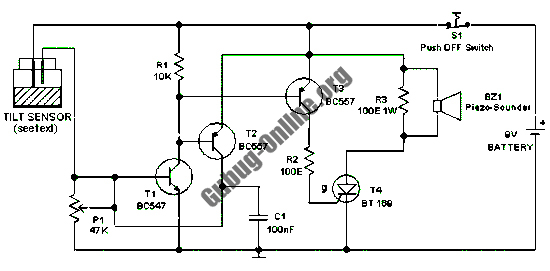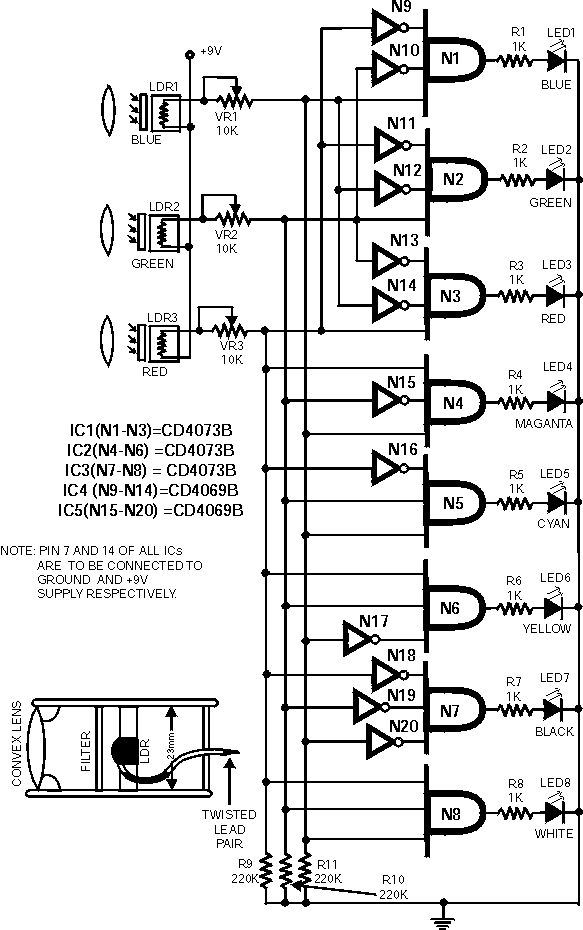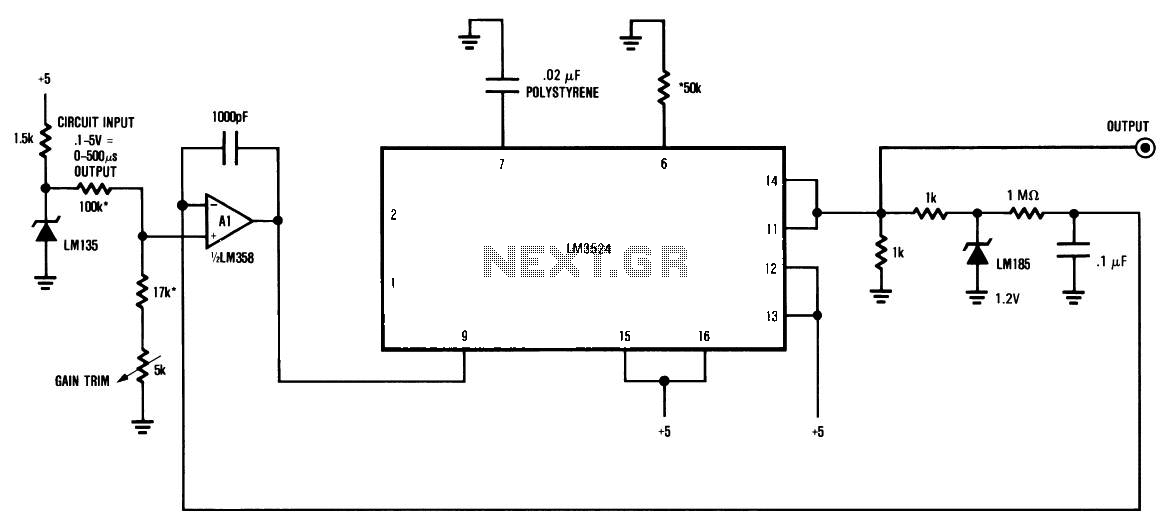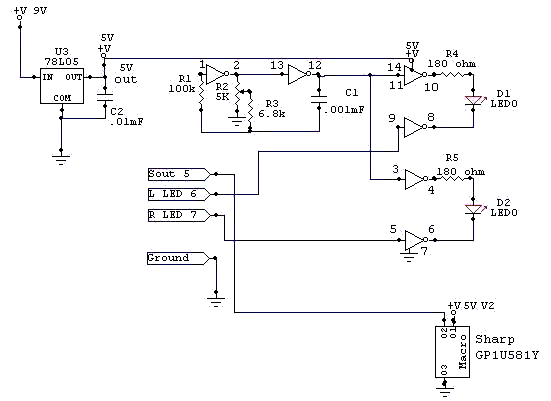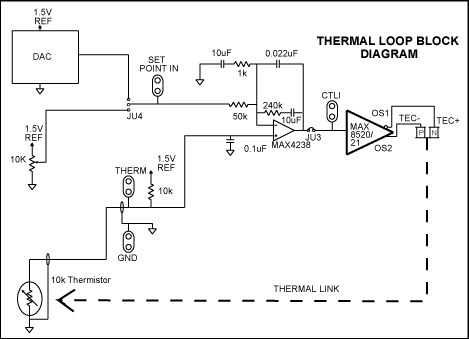
temperature sensor interfacing with 8051
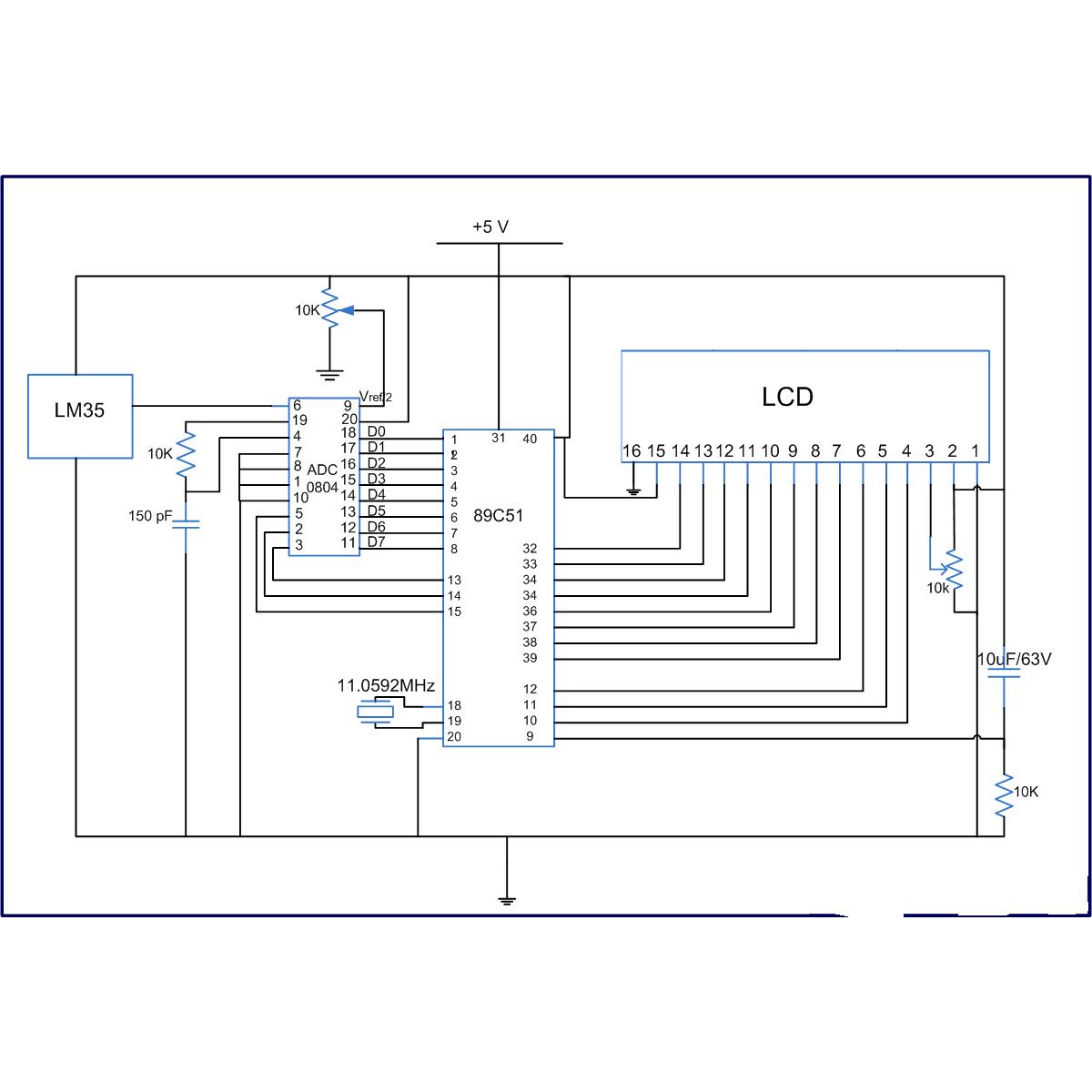
The LM35 series are precision integrated-circuit temperature sensors, whose output voltage is linearly proportional to the Celsius (Centigrade) temperature. The LM35 has an advantage over linear temperature sensors calibrated in Kelvin, as the user is not required to subtract a large constant voltage from its output to obtain convenient Centigrade scaling. The LM35 does not require any external calibration or trimming to provide typical accuracies of ±0.5 °C at room temperature and ±1.0 °C over a full -55 to +150 °C temperature range. Low cost is assured by trimming and calibration at the wafer level. The LM35's low output impedance, linear output, and precise inherent calibration make interfacing to readout or control circuitry especially easy. It can be used with single power supplies or with plus and minus supplies. As it draws only 60 µA from its supply, it has very low self-heating, less than 0.1 °C in still air. The LM35 is rated to operate over a -55 °C to +150 °C temperature range.
The LM35 temperature sensor is an integrated circuit designed for accurate temperature measurement in a wide range of applications. It provides a linear voltage output that is directly proportional to the temperature in degrees Celsius, simplifying the conversion process for users who require temperature readings in this unit. Unlike traditional temperature sensors that may require additional calculations or calibration to convert outputs from Kelvin to Celsius, the LM35 outputs a voltage that corresponds directly to the Celsius scale, thus offering convenience in design and implementation.
The LM35 operates within a temperature range of -55 °C to +150 °C, making it suitable for various environments, from cold storage to high-temperature industrial applications. Its accuracy is impressive, with typical deviations of ±0.5 °C at room temperature and ±1.0 °C across the entire specified temperature range. This level of precision is achieved without the need for external calibration or trimming, as the device is factory-calibrated during the wafer fabrication process. This feature not only enhances reliability but also reduces manufacturing costs.
The sensor features low output impedance, which facilitates easy interfacing with other electronic components, such as microcontrollers or analog-to-digital converters. This characteristic ensures that the output signal remains stable and is less susceptible to noise, which is critical in precision applications. The LM35 can be powered by single-supply configurations as well as dual-supply arrangements, providing flexibility in circuit design.
Moreover, the device consumes a minimal amount of current—only 60 µA—resulting in low self-heating effects. This characteristic is particularly important in applications requiring high accuracy, as it minimizes the influence of the sensor's own heat on the measured temperature, ensuring that the readings reflect the actual environmental conditions. The self-heating effect is less than 0.1 °C in still air, further enhancing the device's effectiveness in precise temperature monitoring.
In summary, the LM35 temperature sensor is an efficient, cost-effective solution for temperature measurement, combining ease of use, high accuracy, and low power consumption, making it ideal for a variety of electronic applications.The LM35 series are precision integrated-circuit temperature sensor, whose output voltage is linearly proportional to the Celsius (Centigrade) temperature. The LM35 thus has an advantage over linear temperature sensorscalibrated in ° Kelvin, as the user is not required to subtract a large constant voltage from its output to obtain convenient Cent
igrade scaling. The LM35 does not require any external calibration or trimming to provide typical accuracies of ± °C at room temperature and ± °C over a full -55 to +150 °C temperature range. Low cost is assured by trimming and calibration at the wafer level. The LM35`s low output impedance, linear output, and precise inherent calibration make interfacing to readout or control circuitry especially easy.
It can be used with single power supplies, or with plus and minus supplies. As it draws only 60 µA from its supply, it has very low self-heating, less than 0. 1 °C in still air. The LM35 is rated to operate over a -55 ° to +150 °C temperature range. 🔗 External reference
The LM35 temperature sensor is an integrated circuit designed for accurate temperature measurement in a wide range of applications. It provides a linear voltage output that is directly proportional to the temperature in degrees Celsius, simplifying the conversion process for users who require temperature readings in this unit. Unlike traditional temperature sensors that may require additional calculations or calibration to convert outputs from Kelvin to Celsius, the LM35 outputs a voltage that corresponds directly to the Celsius scale, thus offering convenience in design and implementation.
The LM35 operates within a temperature range of -55 °C to +150 °C, making it suitable for various environments, from cold storage to high-temperature industrial applications. Its accuracy is impressive, with typical deviations of ±0.5 °C at room temperature and ±1.0 °C across the entire specified temperature range. This level of precision is achieved without the need for external calibration or trimming, as the device is factory-calibrated during the wafer fabrication process. This feature not only enhances reliability but also reduces manufacturing costs.
The sensor features low output impedance, which facilitates easy interfacing with other electronic components, such as microcontrollers or analog-to-digital converters. This characteristic ensures that the output signal remains stable and is less susceptible to noise, which is critical in precision applications. The LM35 can be powered by single-supply configurations as well as dual-supply arrangements, providing flexibility in circuit design.
Moreover, the device consumes a minimal amount of current—only 60 µA—resulting in low self-heating effects. This characteristic is particularly important in applications requiring high accuracy, as it minimizes the influence of the sensor's own heat on the measured temperature, ensuring that the readings reflect the actual environmental conditions. The self-heating effect is less than 0.1 °C in still air, further enhancing the device's effectiveness in precise temperature monitoring.
In summary, the LM35 temperature sensor is an efficient, cost-effective solution for temperature measurement, combining ease of use, high accuracy, and low power consumption, making it ideal for a variety of electronic applications.The LM35 series are precision integrated-circuit temperature sensor, whose output voltage is linearly proportional to the Celsius (Centigrade) temperature. The LM35 thus has an advantage over linear temperature sensorscalibrated in ° Kelvin, as the user is not required to subtract a large constant voltage from its output to obtain convenient Cent
igrade scaling. The LM35 does not require any external calibration or trimming to provide typical accuracies of ± °C at room temperature and ± °C over a full -55 to +150 °C temperature range. Low cost is assured by trimming and calibration at the wafer level. The LM35`s low output impedance, linear output, and precise inherent calibration make interfacing to readout or control circuitry especially easy.
It can be used with single power supplies, or with plus and minus supplies. As it draws only 60 µA from its supply, it has very low self-heating, less than 0. 1 °C in still air. The LM35 is rated to operate over a -55 ° to +150 °C temperature range. 🔗 External reference
